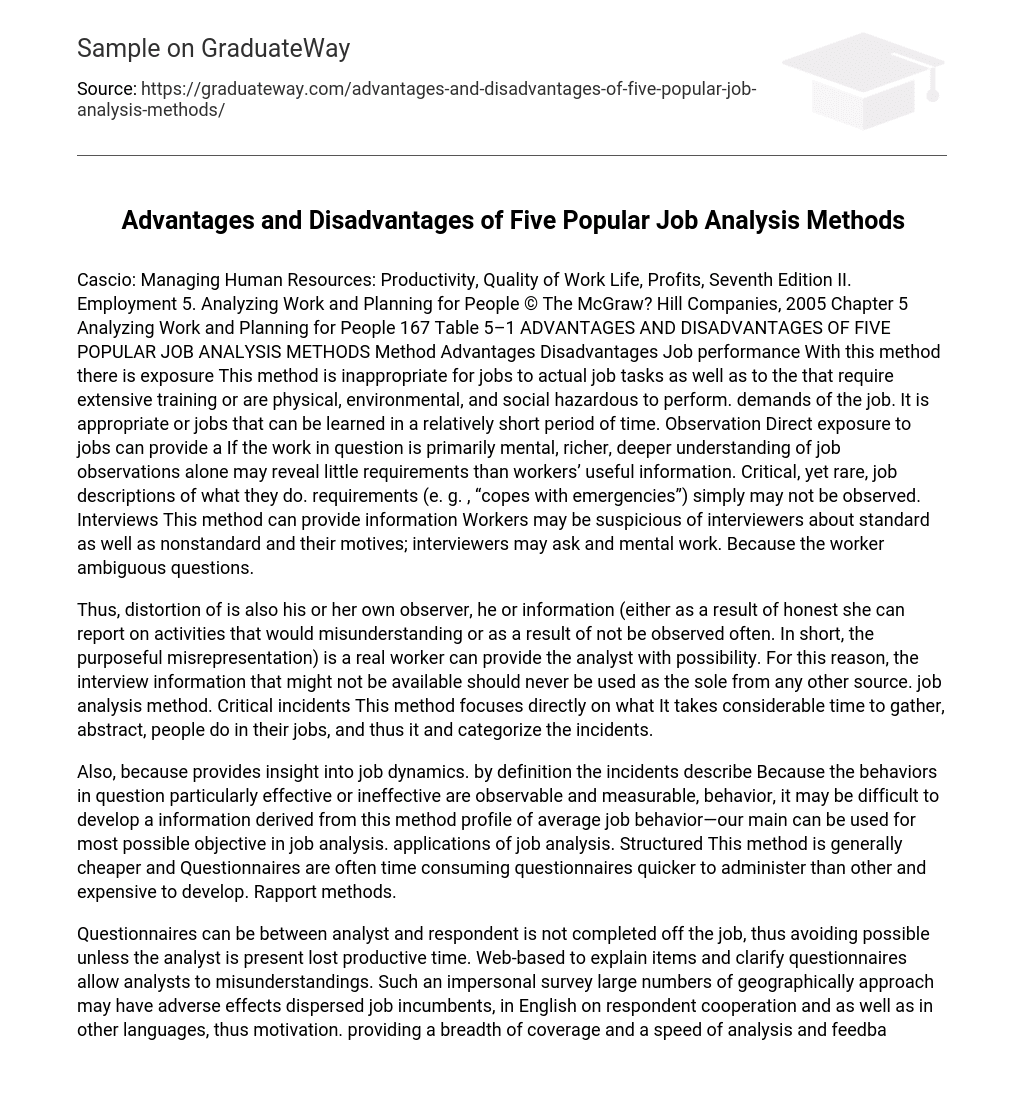Cascio: Managing Human Resources: Productivity, Quality of Work Life, Profits, Seventh Edition II. Employment 5. Analyzing Work and Planning for People © The McGraw? Hill Companies, 2005 Chapter 5 Analyzing Work and Planning for People 167 Table 5–1 ADVANTAGES AND DISADVANTAGES OF FIVE POPULAR JOB ANALYSIS METHODS Method Advantages Disadvantages Job performance With this method there is exposure This method is inappropriate for jobs to actual job tasks as well as to the that require extensive training or are physical, environmental, and social hazardous to perform. demands of the job. It is appropriate or jobs that can be learned in a relatively short period of time. Observation Direct exposure to jobs can provide a If the work in question is primarily mental, richer, deeper understanding of job observations alone may reveal little requirements than workers’ useful information. Critical, yet rare, job descriptions of what they do. requirements (e. g. , “copes with emergencies”) simply may not be observed. Interviews This method can provide information Workers may be suspicious of interviewers about standard as well as nonstandard and their motives; interviewers may ask and mental work. Because the worker ambiguous questions.
Thus, distortion of is also his or her own observer, he or information (either as a result of honest she can report on activities that would misunderstanding or as a result of not be observed often. In short, the purposeful misrepresentation) is a real worker can provide the analyst with possibility. For this reason, the interview information that might not be available should never be used as the sole from any other source. job analysis method. Critical incidents This method focuses directly on what It takes considerable time to gather, abstract, people do in their jobs, and thus it and categorize the incidents.
Also, because provides insight into job dynamics. by definition the incidents describe Because the behaviors in question particularly effective or ineffective are observable and measurable, behavior, it may be difficult to develop a information derived from this method profile of average job behavior—our main can be used for most possible objective in job analysis. applications of job analysis. Structured This method is generally cheaper and Questionnaires are often time consuming questionnaires quicker to administer than other and expensive to develop. Rapport methods.
Questionnaires can be between analyst and respondent is not completed off the job, thus avoiding possible unless the analyst is present lost productive time. Web-based to explain items and clarify questionnaires allow analysts to misunderstandings. Such an impersonal survey large numbers of geographically approach may have adverse effects dispersed job incumbents, in English on respondent cooperation and as well as in other languages, thus motivation. providing a breadth of coverage and a speed of analysis and feedback that is impossible to obtain otherwise.





